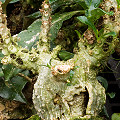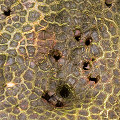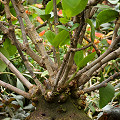Q: Ant plants (Dischidia, Myrmecodia, etc.)
A: Ant plants are what people often call those plants that have
evolved mutualistic relationships with ants. A large number of plants have evolved these relationships, and it is particularly common
with epiphytic plants. Usually, the plants provide
comfortable little nooks for the ants to live in. Frequently, the plant will develop a massively swollen base riddled with cavities.
The ants, in turn, either bring nutrients (can you say ant poop?) to the plant or fend off competitors
or even pests. Even the carnivorous pitcher plant Nepenthes bicalcarata has inflated tendrils that are hollow and
which are colonized by ants. The ants, among other things, drive off invading herbivorous weevils.
Other plants, such as Acacia hindsii produce vicious stipules and Beltian bodies. I bet you wonder what those are,
huh? Are you interested enough to google it? I dare you! And then check out the photographs I have of the Beltian bodies on
Galleria Carnivora.
 Roots sup on
Roots sup on
dead ants and poo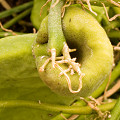 Looking into the
Looking into the
ant house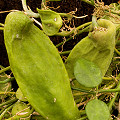 More ant homes
More ant homes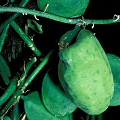 Dischidia rafflesiana
Dischidia rafflesiana
ant homes
The Dischidia plants to the right make strange little pouch-like structures that look like
fat pickles. Ants live in the pouches and bring poop and detritus into them. After a while, the plant
sends roots into the pouch to absorb the anty-flavored goodness that has accumulated. Although the plants are getting
food from, in part, dead ants that might have died within the plant, it really does not seem right to call it carnivorous.
But there is no doubt that it is pretty weird.
Use a search engine. Look up Dischidia or Myrmecodia. Enjoy
Page citations: Mabberley, D.J. 1987; Rice, B.A. 2006a.
